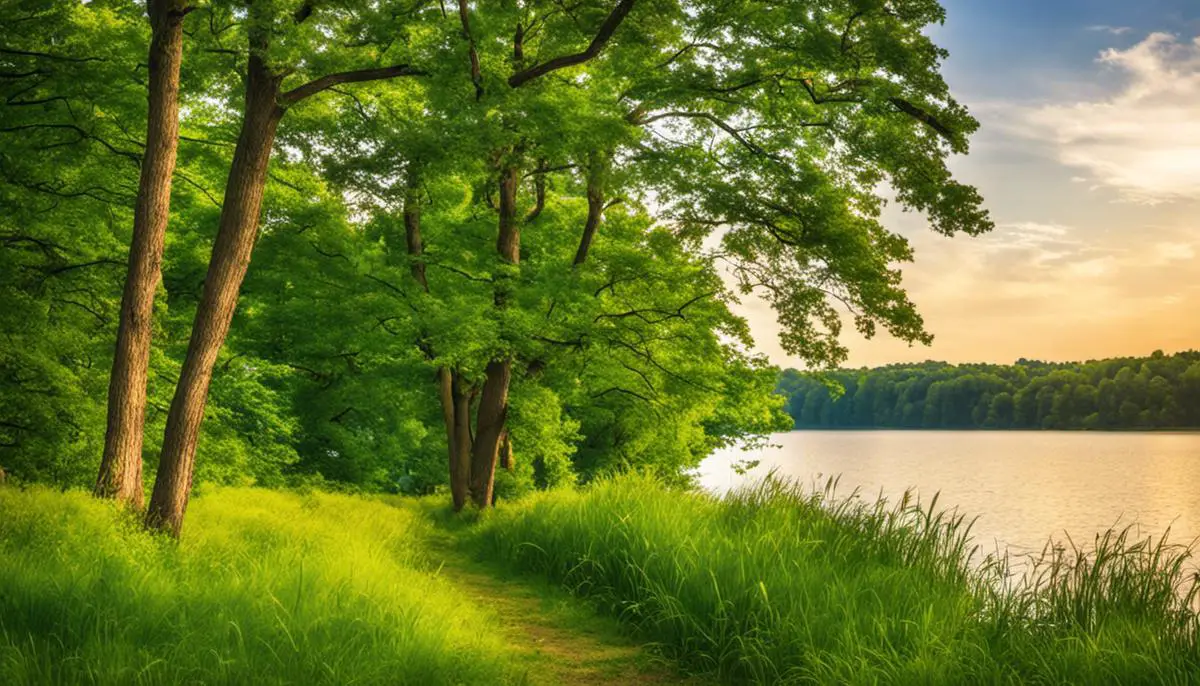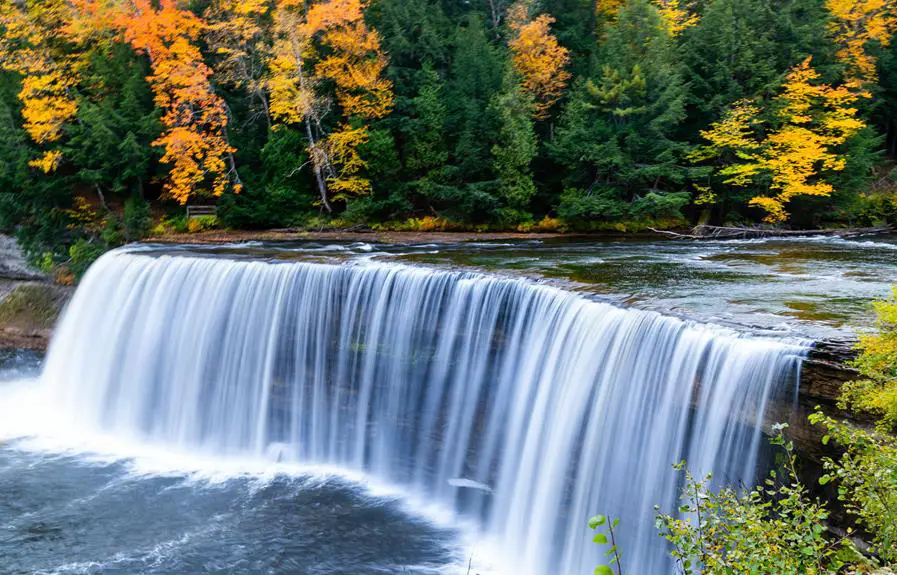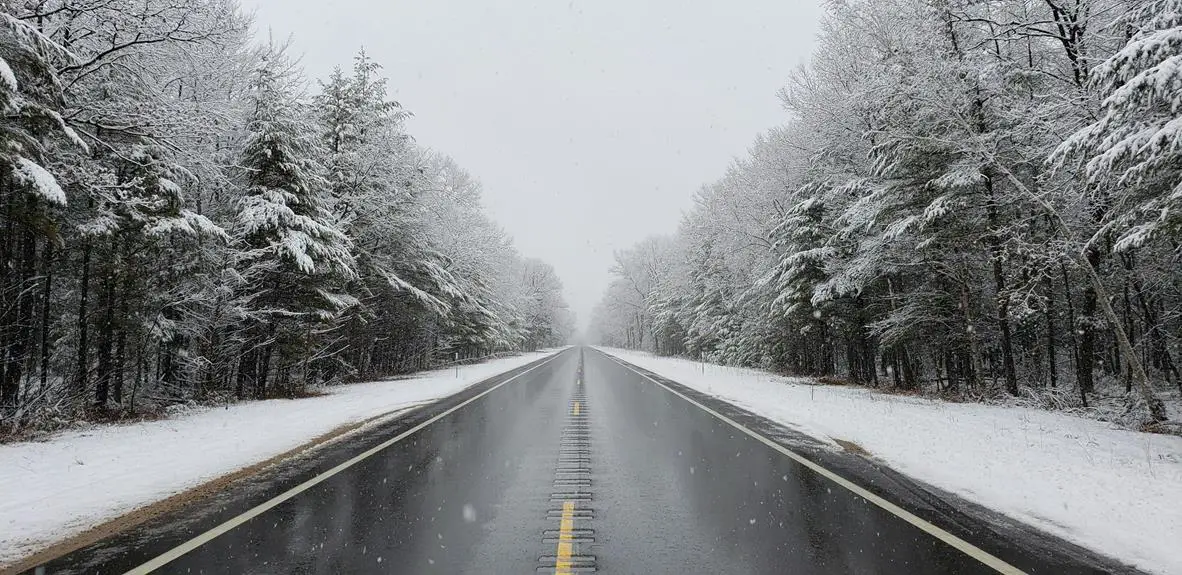The beauty and diversity of the natural landscape in Michigan are captured within the boundaries of its State Parks system. Stretching across the Great Lakes State, these parks reveal a variety of scenery, from dense forests and tranquil lakes to sand dunes and vast wetlands. They offer a treasure trove of recreational activities and opportunities for exploration, regardless of the season. Interwoven within these attractions and offerings lie the stories of the parks’ histories, their conservation efforts, and their on-going role in protecting Michigan’s natural habitats. This comprehensive exploration will guide you through some of Michigan’s noteworthy state parks, highlight exciting activities you can enjoy throughout the year, outline the important role of these parks in conservation, and equip you with valuable insights to plan your visit.
Overview of Michigan State Parks
A Wilderness of Adventure: Michigan State Parks
The Michigan State Parks system is one of the best Michigan outdoor adventure venues stretching across the entire state. Comprising of 103 state parks, totals to approximately 306,000 acres, the system is managed by the Department of Natural Resources. Begun in 1919 with the formation of the Michigan State Park Commission, the state parks system has grown exponentially over the past century.
Diversity through Nature: Unique Features
Michigan State Parks are characterized by their unique landscapes and natural elements. Each park in the state offers a different experience, whether it’s hiking, bird-watching, fishing, or simply relaxing amidst nature.
Porcupine Mountains Wilderness State Park, located in the Upper Peninsula, gives outdoor enthusiasts the chance to explore nearly 60,000 acres of virgin timberland. Home to the Porcupine Mountains and scenic views of Lake Superior, the park is also crossed by the stunning Presque Isle River, featuring breathtaking waterfalls.
Belle Isle Park, the most urban of Michigan’s parks, allows visitors to enjoy a range of recreational activities without leaving the city of Detroit. The 982-acre island park features a zoo, natural and cultural history museums, a conservatory, and a golf course.
Meanwhile, the Sleeping Bear Dunes National Lakeshore presents an iconic Michigan landscape. Comprising miles of sandy beach, towering dunes, and forested wilderness, the park is ideal for hiking, wildlife observation, and camping.
Water Recreation
With Michigan being surrounded by the four Great Lakes, the state parks offer numerous opportunities for water-based activities. Canoeing and kayaking are popular in parks with river access. The best places for kayaking in Michigan include places like Tahquamenon Falls State Park in the Upper Peninsula or the Huron River in the Lower Peninsula. Anglers will find excellent fishing in all parts of the state, from the trout streams of the north to the bass-filled waters of Lake Michigan.
Year-Round Adventure
These parks are not just summer destinations. Many parks, like the Muskegon State Park, offer winter activities such as snowshoeing and cross-country skiing. The parks remain open year-round, providing opportunities for outdoor adventure in all seasons.
Exploring the Wonders of Michigan State Parks
Michigan’s State Parks are not only a treasured part of the state’s history and legacy but also a vibrant hub for outdoor recreation and natural elegance. These parks, differing in landscapes and activities offered, provide a solace from daily life along with an opportunity for boundless exploration and adventure. Regardless of whether you’re a hiker, biker, camper, birdwatcher or simply just an admirer of nature’s majesty, the state parks of Michigan hold the promise of an enduring, unforgettable experience.
Sleeping Bear Dunes National Lakeshore: Sand Dunes Galore
Recognized for its majestic sand dunes, Sleeping Bear Dunes National Lakeshore spans 35 miles along Lake Michigan. The park is famed for its massive “Dune Climb,” a favorite among visitors looking for panoramic views of Glen Lake and a thrilling descent down the sand. I’ve done the dune climb with my own kids and it is amazing!
The picturesque park, with over 450 campsites, offers activities like hiking, star-gazing, fishing, and swimming. Heritage tours provide a look into the park’s cultural history, while opportunities for wildlife viewing are plentiful in the park’s diverse habitats.
Mackinac Island State Park: Island Adventure
Historically significant, Mackinac Island State Park, was the second national park in the US before becoming a Michigan state park in 1895. Covering 80% of Mackinac Island, the park offers a unique car-free experience as automobiles are banned on the island, replaced by bicycle and horse-drawn carriage rides. The island has something for everyone, from historic sites like Fort Mackinac, natural formations like Arch Rock, to recreational opportunities such as hiking, biking and horseback riding.
Porcupine Mountains Wilderness State Park: Wilderness Exploration
Located in the western Upper Peninsula of Michigan, Porcupine Mountains Wilderness State Park is known for its old-growth hardwood forests, abundant wildlife, and stunning views of Lake Superior. Hiking is popular with over 90 miles of trails, including the Escarpment Trail, which provides magnificent views of the park. The Visitor Center offers exhibits on local wildlife and history. The park’s campgrounds accommodate both tent and RV campers and the park also offers rustic cabin rentals.
Tahquamenon Falls State Park: Waterfall Wonders
The centerpiece of Tahquamenon Falls State Park is the Tahquamenon River with its breathtaking waterfalls. The Upper Falls, one of the largest waterfalls east of the Mississippi, has a drop of nearly 50 feet and is more than 200 feet across. Trails ranging from under a mile to over seven miles cater to hikers of all abilities.
Fishing, birdwatching, and winter activities like snowshoeing and cross-country skiing are popular attractions at this park. It is also a great spot for Michigan family camping like I have done there with my own family!
Belle Isle Park: Urban Oasis
Belle Isle Park, located in Detroit, offers diverse recreational opportunities within an urban setting. This island park is home to the Belle Isle Aquarium, the Belle Isle Conservatory, and the Detroit Yacht Club. The park also features a beach, zoo, and the James Scott Memorial Fountain. Visitors can enjoy fishing, hiking, biking, and picnicking, or visit the Dossin Great Lakes Museum for a historical experience.
Embarking on adventures in Michigan State Parks means immersing yourself in the state’s abundant natural beauty and cultural heritage. These parks offer a myriad of outdoor activities, turning every visit into an unforgettable Michigan State Parks Adventure.

Seasonal Activities in Michigan State Parks
Embrace the Chill: Winter Activities in Michigan State Parks
The variety of offerings in Michigan State Parks extend to the winter season. Popular activities, such as snowshoeing and cross-country skiing, come to the forefront with the state’s ample snowfall. Parks such as the Porcupine Mountains Wilderness State Park and Hartwick Pines State Park showcase picturesque trails for both snowshoe enthusiasts and skiers alike. Alternatively, visitors to parks with lakes, like Sleepy Hollow State Park and Mitchell State Park, can engage in the tranquil pastime of ice fishing. Keep in mind, this activity requires a certain degree of preparation and sport-specific knowledge, since safety is reliant on the thickness of the ice. Ice fishing can truly be a serene way to take pleasure in winter’s quiet beauty.
Spring Activities in Michigan State Parks
As winter melts away, Michigan’s landscapes come to life with vibrant colors and wildlife. Spring is the ideal season for birding in Michigan’s State Parks. Migratory birds return to parks like Tawas Point State Park, known as the “Cape May of the Midwest” due to its diverse range of bird species. The spring season also marks the start of fishing seasons on many park lakes and rivers. Take the chance to fish for trout, bass, or walleye at locations like Dodge 4 State Park or the Muskegon River in Newaygo State Park.
Summer Activities in Michigan State Parks
Summer is perhaps the most active season within Michigan’s State Parks. With over 11,000 inland lakes, activities like swimming, boating, and jet-skiing are prevalent. Muskegon State Park to Belle Isle Park both offer designated swimming areas and boating access. Camping is also popular during the summer with many parks like the Tahquamenon Falls State Park offering both rustic and modern camping options. Hiking is another staple activity of Michigan summers. With miles of hiking trails in Michigan ranging from easy to challenging, visitors can explore the diverse landscapes of parks across the state.
Fall Activities in Michigan State Parks
Autumn in Michigan State Parks is a visual treat, with vibrant fall foliage setting the park landscapes aglow. Autumn leaf peeping is a favorite activity among many park visitors, and parks like P.J. Hoffmaster State Park and Porcupine Mountains Wilderness State Park are known for their striking fall colors. Fall also signals the start of hunting seasons in Michigan, with many state parks permitting hunting for species like deer, turkey, and waterfowl within specified hunting zones.
Michigan’s State Parks present an assortment of exhilarating recreational activities throughout the year. From the tranquility of winter snowshoeing to the vibrancy of summer boating, the enchantment of spring bird watching, and the spectacular display of fall foliage, each activity involves a unique adventure. However, remembering to abide by park rules, fostering respect for the parks’ natural resources, and putting safety first are essential aspects of these adventurous endeavors.

Conservation Efforts and Visitor Responsibility
Also serving as a sanctuary for conservation, Michigan State Parks possess immense significance for biodiversity. They shield a plethora of ecosystems and thereby ensure their optimum health. Whether it’s Hartwick Pines State Park, a refuge for the endangered Kirtland’s Warbler, or Belle Isle Park offering protection to the Eastern Box Turtle, every park plays a pivotal role in safeguarding habitats under threat from habitat loss, pollution, and the growing impact of climate change. These parks are not just crucial for recreation but they also act as invaluable life preserves for our threatened and endangered species.
Visitors play a key role in supporting the conservation efforts of Michigan State Parks. Leave No Trace principles are promoted which ask visitors to take only photographs and leave only footprints. These guidelines explain how to minimize the impact on the natural environment by avoiding disturbance to wildlife and habitats, disposing of waste properly, and respecting park rules and regulations.
There are several tips that visitors can follow to ensure they visit the parks sustainably and respectfully. Firstly, staying on marked trails helps to protect plant life and prevent soil erosion. Secondly, visitors are encouraged to use refillable water bottles and environmentally friendly sunscreens to reduce plastic waste and prevent harmful chemicals from contaminating the parks’ water sources.
One responsibility visitors should be aware of is the need to avoid feeding wildlife, which can harm the animals and disrupt their natural behavior. This also includes the storing food properly to avoid attracting animals to camping areas.
Michigan State Parks also provide opportunities for visitors to actively participate in conservation through citizen science and volunteer programs. Citizen science initiatives such as the Michigan Butterfly Network and FrogWatch USA allow park visitors to contribute to ongoing research and monitoring efforts by reporting their observations of various wildlife.
Additionally, the parks offer volunteer stewardship workdays where the public can assist with invasive species removal, native seed collection, and plant and animal monitoring. These programs not only help to maintain park ecosystems but also provide valuable educational opportunities for visitors to learn more about Michigan’s natural resources and the importance of conservation.
Michigan State Parks are not just beautiful natural spaces, they also serve as educational platforms that promote knowledge and respect for our unique environment. The dedicated park interpreters at these outdoor venues facilitate educational programs, guided explorations, and other fun activities. This is done with the aim of creating an awareness of Michigan’s precious natural resources, encouraging stewardship, and ensuring visitors maintain respect for these ecosystems during their adventures.

Planning Your Visit to Michigan State Parks
How to Successfully Plan a Michigan State Park Visit
Experiencing the best of Michigan State Parks requires thoughtful planning. This includes things like learning about park fees, researching accommodation options, following important safety tips, and employing practical advice to enhance your overall visit experience.
Park Fees
The first step in planning your adventure in Michigan State Parks is understanding the park fees. A Recreation Passport is required for entry into the state’s parks and recreation areas. You can purchase this passport for $12 when renewing your vehicle registration or for $17 at park entrances for Michigan residents. For non-residents, the cost is $34 annually or $9 daily.
Accommodation Options
Michigan State Parks offer a variety of accommodation options catering to different visitor preferences. Campgrounds, cabins, tepees, and yurts are some of the choices available. The rustic cabins in Michigan provide basic shelter in wooded areas, while the fully equipped cabins offer a full kitchen, bathroom, and bedrooms, providing an ideal option for families. Some parks also include lodges and mini-cabins. Ensure to book in advance, especially during the busy summer months.
Safety Tips
Safety is paramount when planning your trip to Michigan State Parks. Make sure you have a detailed map of the park and familiarize yourself with the trails and terrain you plan to explore. It is also important to check weather reports ahead of your trip, as Michigan’s weather can change quickly. Pack suitable clothing, a first-aid kit, water and food supplies. Always remember to respect wildlife by keeping a safe distance and not feeding any animals.
Maximizing Your Experience
There are numerous ways to maximize your experience at Michigan State Parks. The parks offer a plethora of activities to engage in, such as hiking, fishing, canoeing, bird watching, and in winter, cross-country skiing and snowshoeing are popular. The state parks also host various events throughout the year like interpretive programs, festivals, and concerts which can enrich your visit.
Resources for Trip Planning
For more comprehensive information, the Michigan Department of Natural Resources (DNR) offers a wealth of resources for trip planning. Their website provides details on park locations, hours of operation, and specific amenities for each park. You can also find updates on park conditions, alerts, and closures. These resources can assist you in making your visit to Michigan State Parks an unforgettable adventure.

Michigan’s State Parks are not just places of recreation but also havens of conservation where we can learn about and appreciate the natural world. By honoring our responsibilities as visitors, we contribute to the preservation of these remarkable natural resources for future generations.
From snow-blanketed woods to summer-kissed lakes, every season unveils a new aspect of their beauty, offering a myriad of adventure prospects for those who wish to engage. Regardless of whether you’re planning a hike through the towering dunes of Sleeping Bear or looking forward to viewing autumn’s color show in Porcupine Mountains, every adventure in Michigan’s State Parks offers the opportunity to connect deeply with nature, experience breathtaking landscapes, and make lasting memories.






